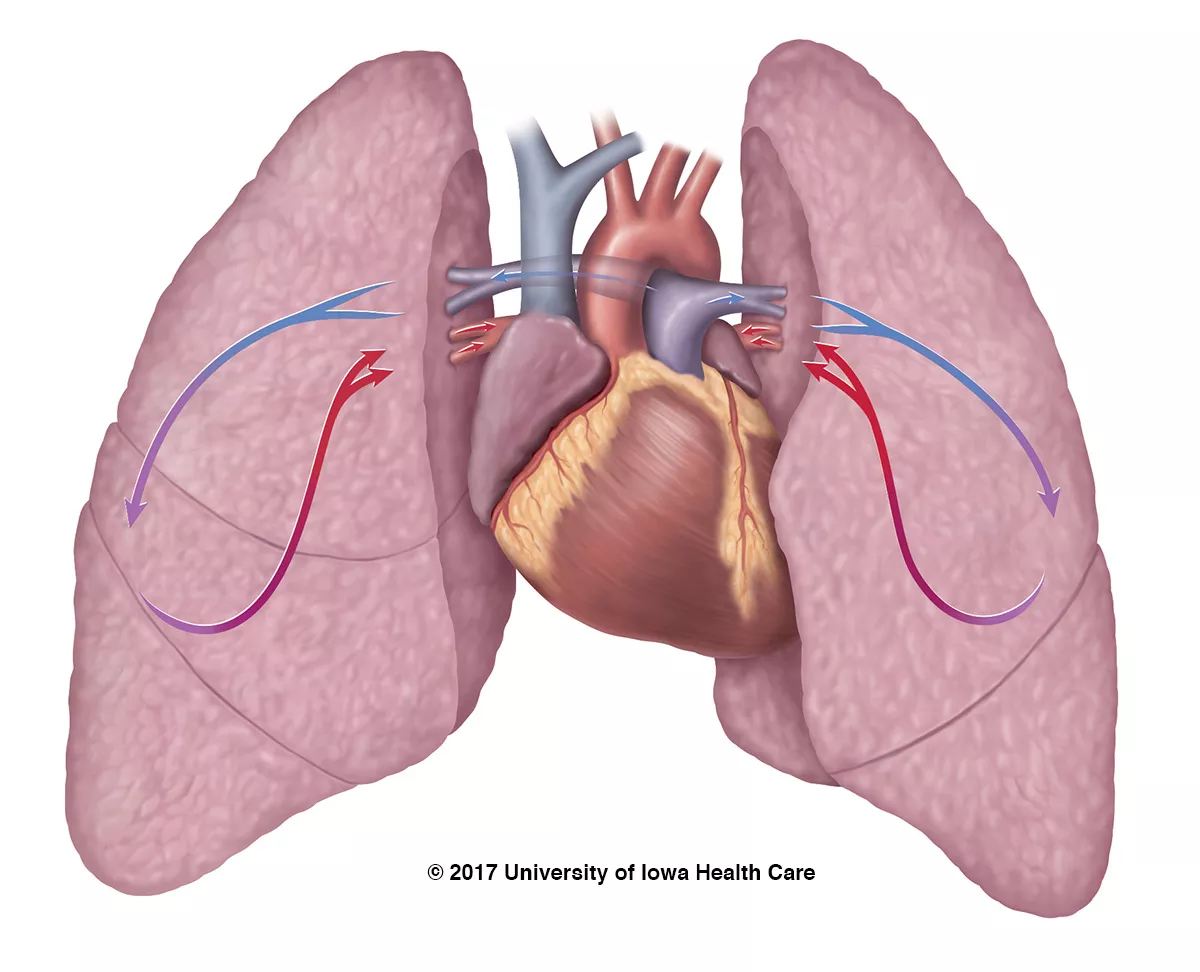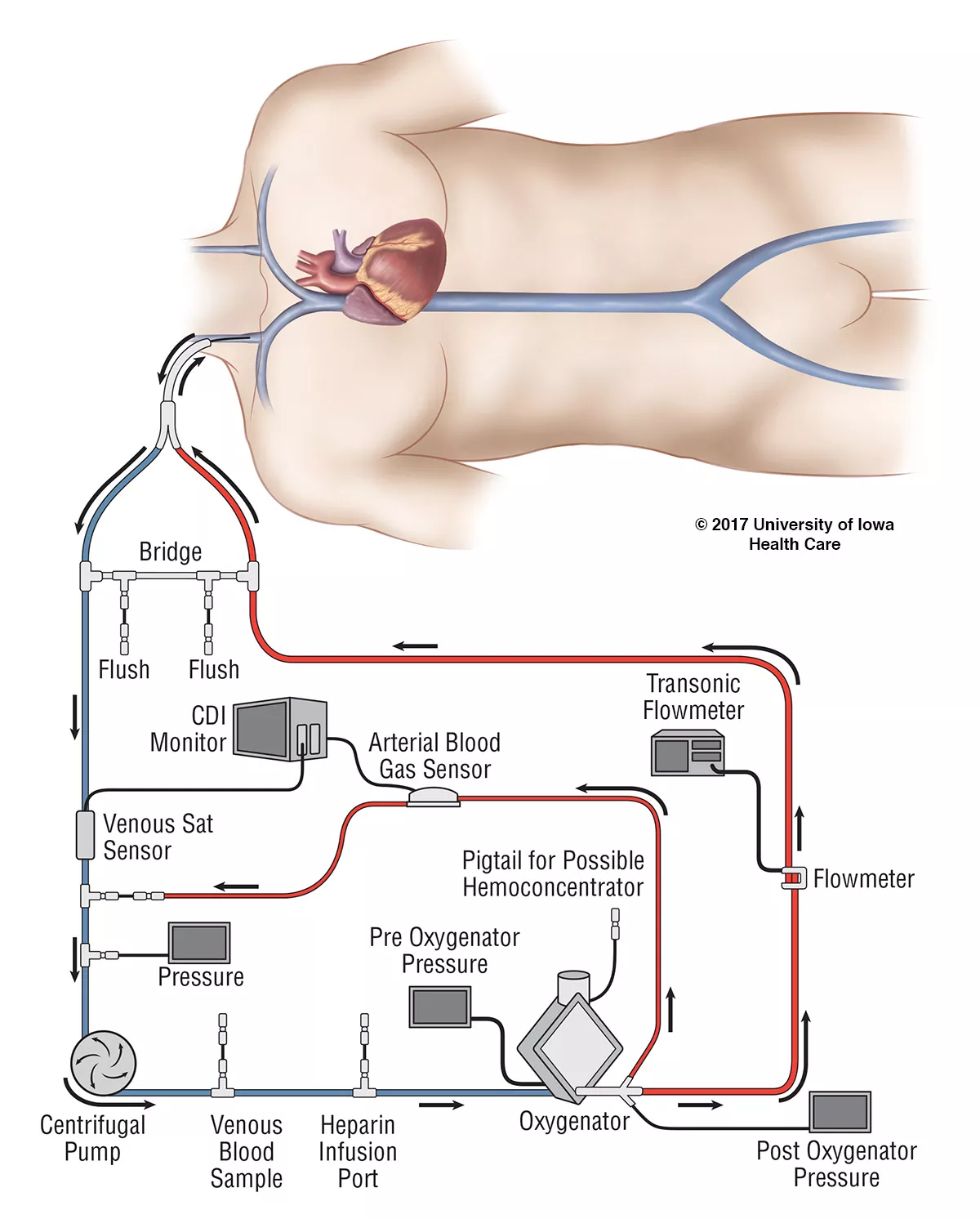
What is ECMO?
Extracorporeal membrane oxygenation, or ECMO, is a therapy that adds oxygen to your loved one’s blood and pumps it through their body like the heart. The process takes place outside the body.
You may hear the process called ECLS, or extracorporeal life support.
ECMO is like a heart-lung machine used in heart surgery and can be used for longer periods of time. ECMO temporarily takes over the work of the heart and lungs so they can rest and heal.
ECMO is used when usual treatments are not working. ECMO does not cure heart or lung disease, it only provides time for the patient’s heart or lungs to heal.

How does ECMO work?
A surgeon places a plastic tube called a cannula into large veins or arteries. The blood vessels can be located in the chest, neck, or groin. The doctor may place different numbers of tubes depending on how ECMO is being used to help.
The ECMO pump pulls blood that has no oxygen attached from a vein and pushes it into the machine’s artificial lung, or oxygenator. That’s where carbon dioxide is removed from the blood and oxygen is added. There’s a color change as the darker blood with no oxygen turns bright red when oxygen is attached to it. As the red blood leaves the oxygenator it is warmed before returning to the patient.
Because ECMO is also helping do the work of the patient’s lungs, the ECMO team can lower the settings of the ventilator, allowing the lungs to rest and heal. Usually medications that have been used to help the heart and lungs function, can be decreased while ECMO is at work.